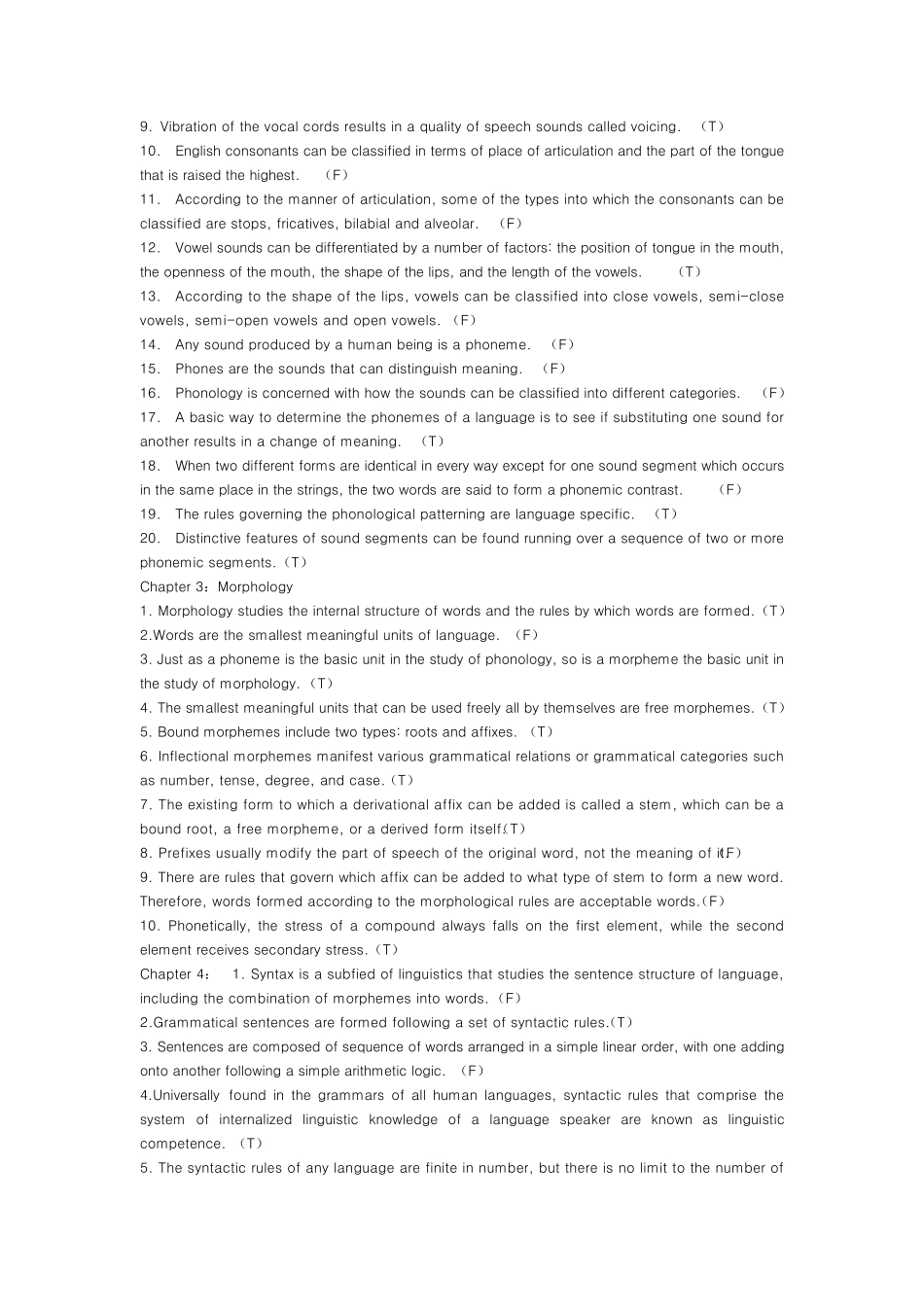Chapter I Introduction T 1. Linguistics is generally defined as the scientific study of language. F 2.Linguistics studies particular language, not languages in general. F 3. A scientific study of language is based on what the linguist thinks. T 4. In the study of linguistics, hypotheses formed should be based on language facts and checked against the observed facts. T 5. General linguistics is generally the study of language as a whole. T 6. General linguistics, which relates itself to(in contrast to) the research of other areas, studies the basic concepts, theories, descriptions, models and methods applicable in any linguistic study. T 7. Phonetics is different from phonology in that the latter studies the combinations of the sounds to convey meaning in communication. F 8. Morphology studies how words can be formed to produce meaningful sentences. T 9. The study of the ways in which morphemes can be combined to form words is called morphology. F 10. Syntax(rules that govern the combination of words to form grammatically permissible sentences in L) is different from morphology in that the former not only studies the morphemes, but also the combination of morphemes into words and words into sentences. T 11. The study of meaning in language is known as semantics. F 12. Both semantics(L is used to convey meaning- the study of meaning) and pragmatics( the study of meaning is conducted in the context of language use) study meanings. T 13. Pragmatics is different from semantics in that pragmatics studies meaning not in isolation, but in context. T 14.Social changes can often bring about language changes. T 15. Sociolinguistics is the study of language in relation to society. F 16. Modern linguis...


